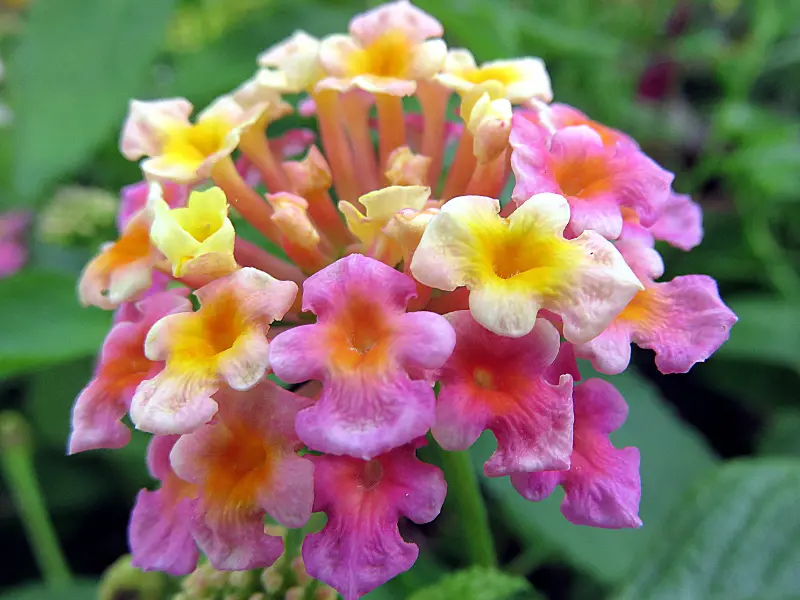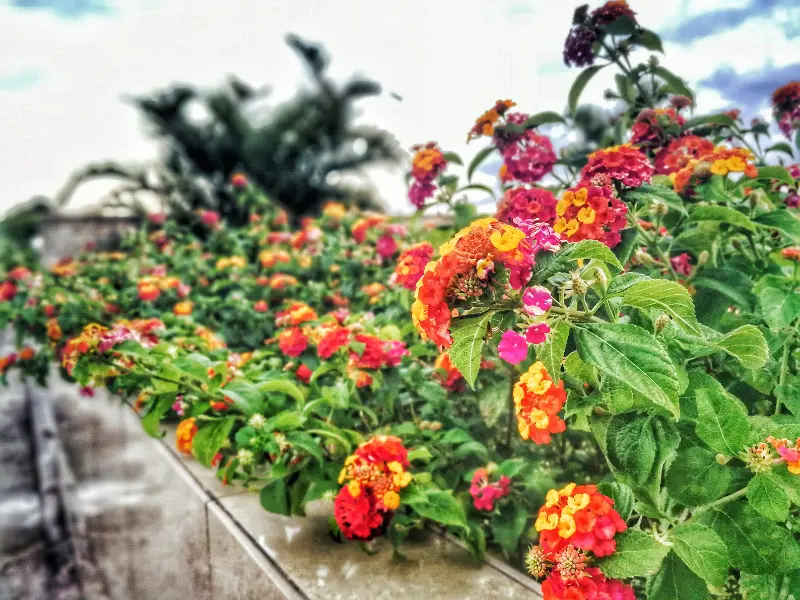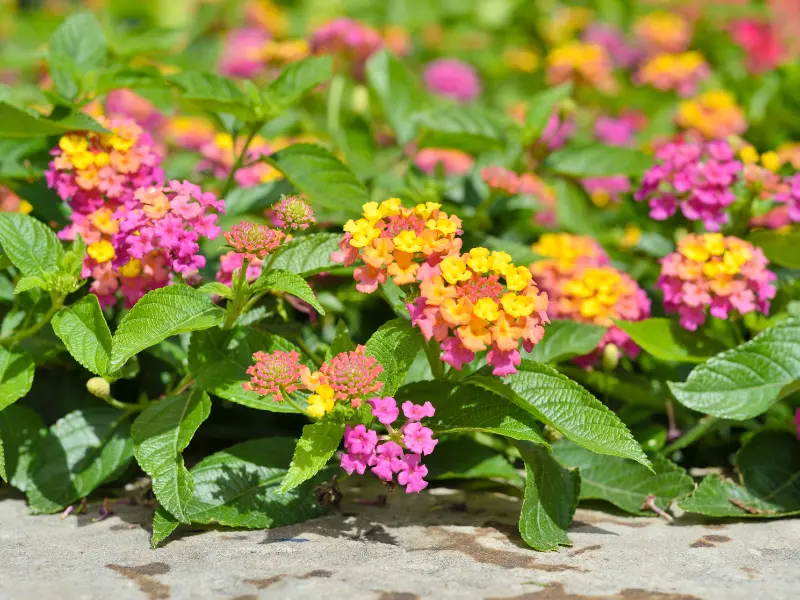Are you looking to add a splash of color and vibrancy to your garden? If so, Lantana Rose Sunrise might be the perfect plant for you. Known for its stunning, multicolored blooms, this tropical beauty is not only eye-catching but also relatively easy to care for. Whether you’re a seasoned gardener or just getting started, this guide will walk you through everything you need to know about growing and maintaining Lantana Rose Sunrise, so your garden can thrive year-round.
What is Lantana Rose Sunrise?

Lantana Rose Sunrise, a variety of the Lantana camara species, is a beautiful flowering plant with clusters of vibrant flowers that range from soft pinks to deep oranges and yellows. Originating from the tropics, this plant thrives in warm climates and is ideal for adding vibrant color to gardens, patios, and even balconies. Its drought-tolerant nature makes it a low-maintenance option for those looking to beautify their outdoor space with minimal effort.
Why Choose Lantana Rose Sunrise?
-
Colorful Blooms: The flowers of Lantana Rose Sunrise are known for their multi-colored hues that shift as they bloom, making them a visual treat in any garden.
-
Butterfly & Hummingbird Friendly: This plant attracts pollinators like butterflies and hummingbirds, which can help improve the health of your garden ecosystem.
-
Drought Tolerant: Once established, Lantana Rose Sunrise requires very little water, making it ideal for areas with water restrictions or hot climates.
How to Grow Lantana Rose Sunrise

Growing Lantana Rose Sunrise in your garden is a rewarding experience. Follow these tips to ensure it flourishes and becomes the highlight of your outdoor space.
1. Choosing the Right Location
Lantana Rose Sunrise thrives in full sun. Choose a spot in your garden that receives at least 6 hours of sunlight per day. While it can tolerate partial shade, it won’t bloom as prolifically in low light.
Read more: How to Find Your Gardening Zone and the Best Plants to Grow in Your Region
2. Preparing the Soil
Lantana plants prefer well-drained, slightly acidic to neutral soil. If your garden has clay-heavy soil, amend it with compost or sand to improve drainage. If planting in containers, make sure the pot has adequate drainage holes to prevent waterlogging.
Read more: How to Prepare Soil to Plant: A Step-by-Step Guide for Beginners
3. Planting Your Lantana Rose Sunrise
-
Step 1: Dig a hole that is about twice the size of the plant’s root ball.
-
Step 2: Gently remove the plant from its nursery container and place it in the hole.
-
Step 3: Backfill with soil and water thoroughly to settle the roots.
4. Watering and Fertilizing
Lantana Rose Sunrise is a drought-tolerant plant once established, but it does need regular watering while it’s getting settled. Water the plant deeply, allowing the soil to dry out between waterings to avoid root rot.
Fertilize the plant once a month with a balanced fertilizer to encourage healthy growth and abundant flowers.
Lantana Rose Sunrise Care Tips

Now that you’ve planted your Lantana Rose Sunrise, it’s time to keep it healthy and thriving. Here are some essential care tips:
1. Watering
Even though Lantana Rose Sunrise is drought-tolerant, it still requires regular watering, especially during hot spells. Water the plant thoroughly when the soil feels dry to the touch. Avoid over-watering, as this can lead to root rot.
2. Pruning
Pruning is crucial to maintaining the shape and health of your Lantana. Trim back dead or leggy growth to encourage more vibrant blooms. You can also prune after the plant has finished flowering to keep it neat and tidy.
3. Pest Control
Lantanas can be susceptible to pests such as aphids and spider mites. Keep an eye on your plant, and if you notice any pests, treat them with insecticidal soap or a mixture of water and mild dish soap.
Common Problems When Growing Lantana Rose Sunrise
While Lantana Rose Sunrise is relatively easy to care for, you may encounter a few problems. Here are some common issues and how to address them:
1. Overwatering and Root Rot
One of the most common mistakes gardeners make is overwatering their Lantana. This plant prefers soil to dry out between waterings. If the leaves turn yellow and the soil feels soggy, this could be a sign of root rot. To avoid this, always ensure proper drainage and only water when necessary.
2. Poor Flowering
If your Lantana Rose Sunrise isn’t flowering, it may not be getting enough sunlight. Make sure the plant is in a location that receives at least 6 hours of sunlight per day. Additionally, a lack of fertilizer can also stunt flowering, so be sure to feed it regularly during the growing season.
3. Yellowing Leaves
Yellowing leaves can be a sign of nutrient deficiencies or overwatering. Make sure your plant is getting enough nutrients by using a balanced fertilizer and check the watering schedule to avoid root rot.
Best Growing Practices for Lantana Rose Sunrise in Different Environments
Lantana Rose Sunrise can be grown in a variety of environments. Whether you’re planting in a container or directly in the ground, here are some helpful tips:
1. Container Growing
Lantana Rose Sunrise does exceptionally well in containers. When planting in pots, choose a container with good drainage and use a well-draining potting mix. Containers also make it easier to move the plant indoors during the winter if you live in a colder climate.
2. Landscaping Ideas
Lantana is perfect for garden borders, hanging baskets, and mixed flower beds. Its vibrant colors contrast beautifully with other plants, creating a stunning visual display. You can also use it as ground cover or in a tropical-themed garden.
How to Propagate Lantana Rose Sunrise
If you love your Lantana and want to grow more, propagation is a great option. Here’s how to propagate it from cuttings:
1. Cutting Preparation
Select a healthy stem with no flowers or buds. Cut a 4-6 inch piece from the tip of the stem, making sure to remove any leaves from the lower half.
2. Rooting the Cutting
Place the cutting in a pot with well-drained soil and keep it in a warm, sunny location. Mist the cutting regularly to keep it moist, but avoid over-watering. After a few weeks, roots should begin to develop, and the cutting will be ready for planting.
Benefits of Growing Lantana Rose Sunrise
Lantana Rose Sunrise offers a variety of benefits beyond its aesthetic value. Here are a few reasons why it’s an excellent choice for your garden:
-
Attracts Pollinators: Butterflies, bees, and hummingbirds love Lantana flowers, making it a great plant for supporting local wildlife.
-
Low Maintenance: With its drought-tolerant nature, Lantana requires minimal care once established, making it perfect for busy gardeners or those with limited time.
-
Vibrant Color: The colorful flowers of Lantana Rose Sunrise brighten up any garden, adding a pop of color that lasts all season.
Frequently Asked Questions (FAQ)
1. How often should I water my Lantana Rose Sunrise plant?
Lantana Rose Sunrise prefers to dry out between waterings. Water deeply when the soil feels dry to the touch, but avoid overwatering, as this can lead to root rot.
2. Can Lantana Rose Sunrise be grown indoors?
Yes, Lantana Rose Sunrise can be grown indoors with sufficient sunlight. Place it near a window that receives at least 6 hours of direct or indirect sunlight daily.
3. What is the best fertilizer for this plant?
Use a balanced, slow-release fertilizer to provide essential nutrients. Apply it during the growing season, particularly in spring and early summer, to encourage blooming.
4. Is Lantana Rose Sunrise poisonous to pets?
Yes, Lantana is toxic to pets, especially when ingested. Keep it out of reach of dogs, cats, and other animals.
Conclusion
Lantana Rose Sunrise is a stunning addition to any garden. Its vibrant flowers, ease of care, and ability to attract pollinators make it a must-have for garden enthusiasts. With the right care and attention, your Lantana plant will thrive and provide beauty to your outdoor space for years to come. Ready to get started? Choose the perfect spot, follow our planting and care tips, and enjoy the stunning blooms that Lantana Rose Sunrise has to offer!
